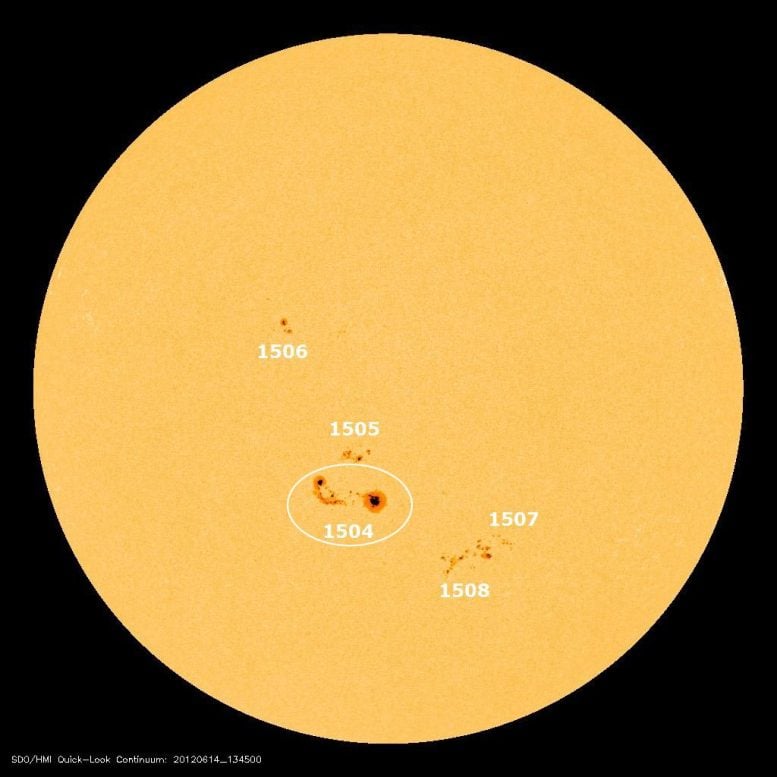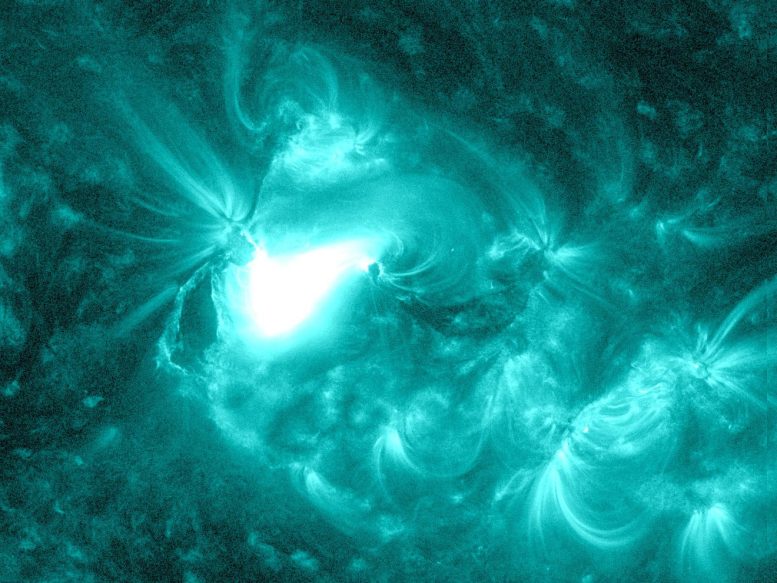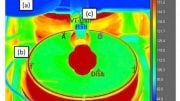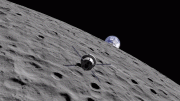
A European visitor captured this aurora in Badlands, South Dakota. Credit: Marko Korosec
Simulations show that on June 16, 2012, the combined effects of two coronal mass ejections from AR 1504 compressed the magnetopause to a minimum of approximately 24,000 miles from Earth’s surface, causing bright aurora to be seen at lower latitudes than normal.
On June 16, 2012, at 4:55 a.m. EDT (1:55 a.m. PDT), the combined effects of two coronal mass ejections from AR 1504, passed NASA’s Advanced Composition Explorer (ACE) spacecraft on the way toward Earth’s protective magnetic bubble, the magnetosphere. ACE is approximately 900,000 miles from Earth and can detect such incoming shocks about 30-45 minutes before they hit the magnetosphere.
Simulations performed at NASA Goddard’s Space Weather Center indicate that the disturbance strongly compressed the magnetopause, ultimately to a minimum of approximately 24,000 miles from Earth’s surface at 6:28 PM EDT. This is an altitude some 2,000 miles lower than spacecraft in geosynchronous orbit.

Aurora were seen as far south as Ocean City, Maryland. This photo was taken by a camper on the shores of Assateague Island, facing North. Credit: Jeff Berkes
The changing shape of Earth’s magnetopause also influenced the aurora, causing bright aurora to be seen at lower latitudes than normal, as low as Iowa, Nebraska, and Maryland.
This movie from the Solar Dynamics Observatory (SDO) shows the M class flare on June 14, 2012, from 9:15 AM to 2:00 PM EDT. The sun is shown here in teal as this is the color typically used to represent light in the 131 Angstrom wavelength, a wavelength particularly good for observing flares. Credit: NASA/SDO
An active region on the sun, numbered AR 1504, rotated into view over the left side of the sun on June 10, 2012. The region fired off two M-class flares and two coronal mass ejections (CMEs) on June 13 and June 14, 2012. The first flare lasted for a relatively long three hours, peaking on June 13, 2012, at 9:17 AM EDT. The associated CME traveled at approximately 375 miles (603 kilometers) per second and is directed toward Earth, though due to its slow speed, the effect on Earth is expected to be minimal.
The second M-class flare was also a long-duration flare, and it peaked on June 14, 2012, at 10:08 AM EDT. The CME associated with this flare is traveling much faster – preliminary analysis at Goddard’s Space Weather Center indicates it is traveling at speeds of approximately 800 miles per second. It is traveling toward Earth, and could also impact Mars and the Spitzer spacecraft.











Be the first to comment on "Two Coronal Mass Ejections Strongly Compressed the Magnetopause"